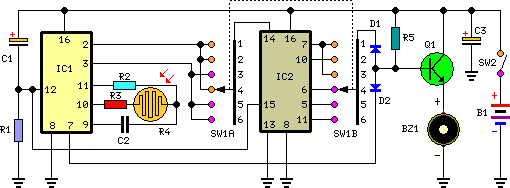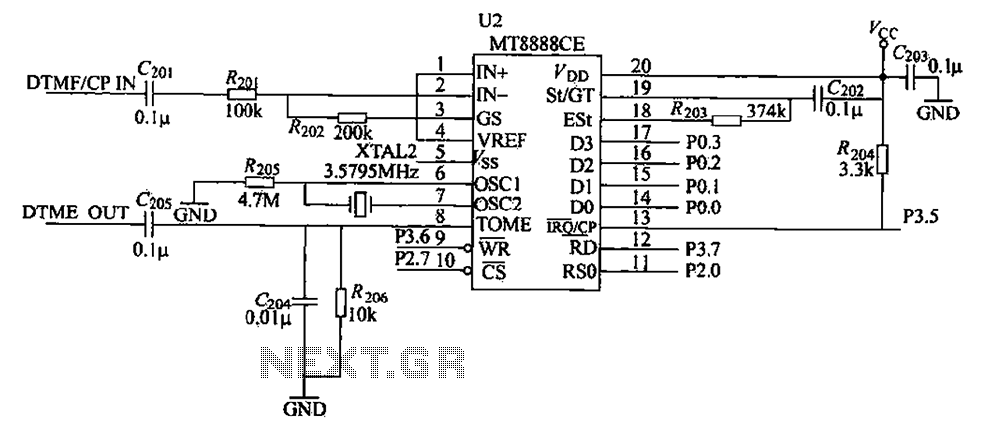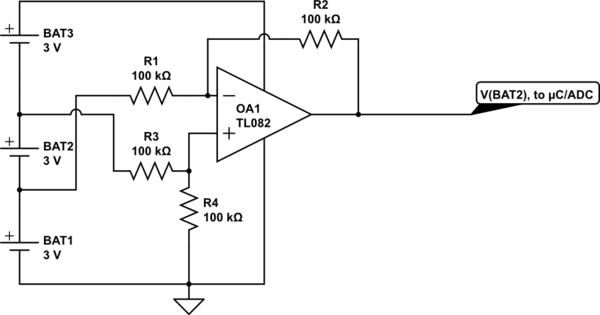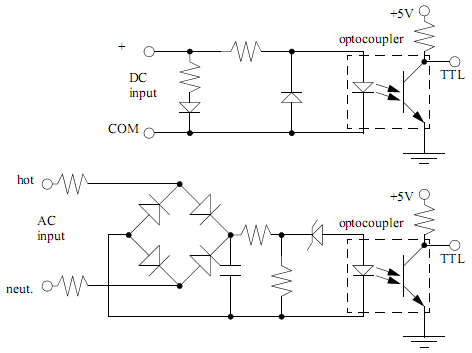
Metal detector circuit with CS209A
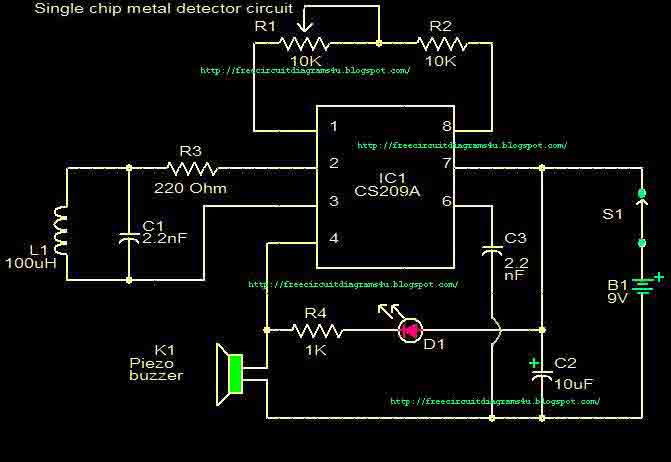
This circuit is a single chip metal detector. Actually, we can use this one to detect metals. Especially, you have seen some army soldiers keep something to detect metals. That equipment has been made through this circuit. So you also can use this to detect metals, even bombs. More: Note The IC must be mounted on a holder. The switch S1 can be a slide type ON/OFF switch. The POT R1 can be used to adjust the sensitivity of the circuit.
The described metal detector circuit utilizes a single integrated circuit (IC) to identify the presence of metallic objects. The design is compact and is particularly suitable for applications such as security checks, treasure hunting, or even military use. The circuit operates by generating an electromagnetic field and detecting changes in this field caused by nearby metals.
The IC serves as the core component of the metal detector, and it is advised to mount it on a holder to ensure stability and ease of connection to other components. This setup minimizes the risk of damage to the IC during operation or transportation.
A critical feature of the circuit is the switch S1, which can be implemented as a slide-type ON/OFF switch. This allows the user to easily control the power supply to the circuit, ensuring that it can be turned off when not in use, thus conserving battery life and preventing accidental activation.
Additionally, the circuit includes a potentiometer (POT) labeled R1. This component is essential for adjusting the sensitivity of the metal detector. By varying the resistance of R1, the user can fine-tune the detection range and responsiveness of the circuit to different types of metals. This adjustability enhances the versatility of the metal detector, allowing it to be optimized for specific applications or environments.
Overall, this metal detector circuit is a practical solution for detecting metallic objects, providing essential features such as user-adjustable sensitivity and simple power control, making it suitable for a wide range of users and applications.This circuit is a Single chip metal detector.Actually we can use this one to detect metals.Specially,I think you have seen some army soldiers keep some thing to detect metals.That equipment has been made through this circuit.so you also can use this to detect metals even bombs Note # The IC must be mounted on a holder. # The switch S1 can be a slide type ON/OFF switch. # The POT R1 can be used to adjust the sensitivity of the circuit. 🔗 External reference
The described metal detector circuit utilizes a single integrated circuit (IC) to identify the presence of metallic objects. The design is compact and is particularly suitable for applications such as security checks, treasure hunting, or even military use. The circuit operates by generating an electromagnetic field and detecting changes in this field caused by nearby metals.
The IC serves as the core component of the metal detector, and it is advised to mount it on a holder to ensure stability and ease of connection to other components. This setup minimizes the risk of damage to the IC during operation or transportation.
A critical feature of the circuit is the switch S1, which can be implemented as a slide-type ON/OFF switch. This allows the user to easily control the power supply to the circuit, ensuring that it can be turned off when not in use, thus conserving battery life and preventing accidental activation.
Additionally, the circuit includes a potentiometer (POT) labeled R1. This component is essential for adjusting the sensitivity of the metal detector. By varying the resistance of R1, the user can fine-tune the detection range and responsiveness of the circuit to different types of metals. This adjustability enhances the versatility of the metal detector, allowing it to be optimized for specific applications or environments.
Overall, this metal detector circuit is a practical solution for detecting metallic objects, providing essential features such as user-adjustable sensitivity and simple power control, making it suitable for a wide range of users and applications.This circuit is a Single chip metal detector.Actually we can use this one to detect metals.Specially,I think you have seen some army soldiers keep some thing to detect metals.That equipment has been made through this circuit.so you also can use this to detect metals even bombs Note # The IC must be mounted on a holder. # The switch S1 can be a slide type ON/OFF switch. # The POT R1 can be used to adjust the sensitivity of the circuit. 🔗 External reference

